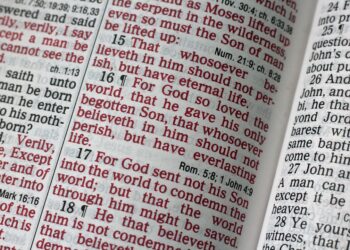The intersection of religion and art has been a topic of interest for centuries. Religion often inspires art, and art often serves as a form of expression or worship. Throughout history, religious stories, symbols, and figures have been a constant source of inspiration for artists, resulting in some of the most recognized and cherished works of art.
One of the earliest examples of religious art is found in cave paintings from around 30,000 BCE. Some of these include representations of gods or deities, such as the horned figure found in the Lascaux cave in France. As religions evolved and became institutionalized, religious art became more formalized and hierarchical, with religious institutions commissioning works of art to glorify their faith and inspire devotion.
In Christianity, religious art has played an important role in the spread of the faith. Throughout history, artists have depicted scenes from the Bible, the lives of saints, and the events and beliefs of Christianity. In the early Christian period, when the religion was still being persecuted, artists created hidden symbols and coded messages in their work to communicate their beliefs without fear of persecution.
During the Renaissance period, religious art exploded with the works of Michelangelo, Leonardo da Vinci, and Raphael. These artists brought a new level of realism to religious art, depicting subjects in lifelike proportions and with dramatic lighting and shadows. These works were often commissioned by the Church, and they helped to create a sense of splendor and majesty that emphasized the power and grandeur of God.
Similarly, in Islam, the Quran and the Prophet Muhammad’s life and teachings have inspired artists and craftsmen for centuries. Islamic art is characterized by its intricate patterns and calligraphy, expressing a devotion to God through the beauty of symmetry and repetition.
In Hinduism, religious art has been used to convey complex philosophical ideas and concepts. Hindu art often depicts the gods and goddesses of the Hindu pantheon in a multitude of forms and faces. This approach reflects the idea of the divine as being multitudinous and all-encompassing.
In Buddhism, religious art is often used as a form of meditation and contemplation. Buddhist art is characterized by its peacefulness and serenity, with figures often depicted in poses of meditation.
In contemporary times, religious art has continued to evolve and inspire. Despite the growth of secularism and the decline in religious beliefs, religious art remains a vital source of inspiration and expression for millions of people around the world.
In conclusion, the intersection of religion and art is a fascinating topic that spans cultures and civilizations. Throughout history, art has been used as a tool for religious devotion, expression, and communication. From the cave paintings of ancient times to the religious art of the Renaissance and beyond, religious art has been a constant source of inspiration and reflection. As society evolves and changes, it is likely that religious art will continue to evolve and adapt, remaining an important aspect of human culture and expression.













